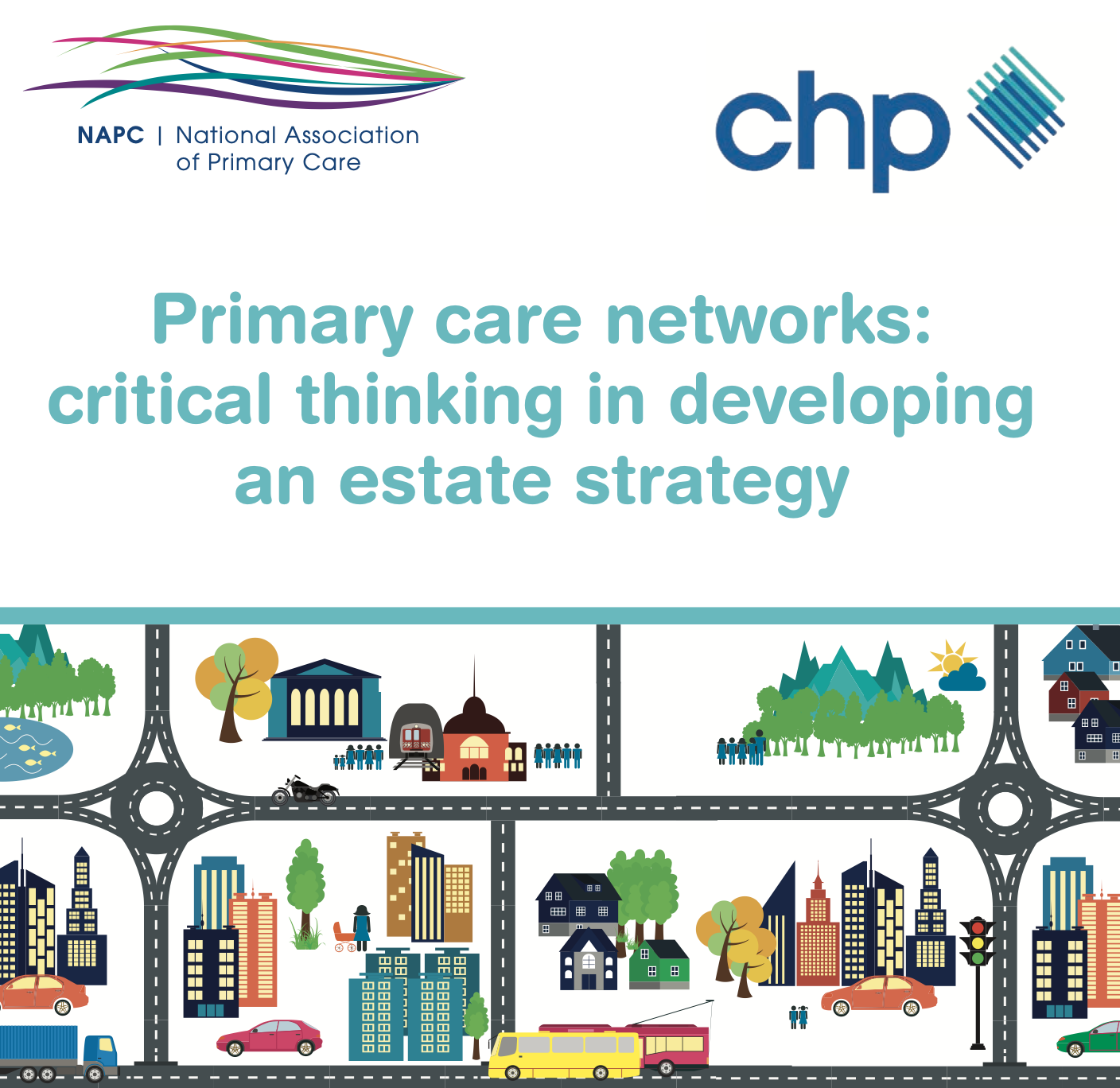A practical ‘how to’ guide to help primary care networks (PCNs) start work on developing their premises so they’re able to provide integrated, community-based health and care well into the future is launched today (5 March).
The guide - Primary Care Networks: critical thinking in developing an estate strategy – has been produced by Community Health Partnerships (CHP), experts in NHS estates, in collaboration with the National Association of Primary Care (NAPC).
Its purpose is to support PCNs in delivering expanded services and new ways of integrated working to realise the ambitions of the NHS Long Term Plan.
Dr James Kingsland, NAPC National Clinical Director, says: “Good quality, integrated primary care needs to be provided in modern, efficient buildings with the latest digital technology and the capacity to cope with future demand. This is already happening in some parts of the country, but we know that the primary care estate needs considerable attention in many areas if PCNs are to succeed when it comes to implementing the vision of the Long Term Plan.”
“All too often we find conversations about buildings only take place after discussions about service redesign have finished and the limitations of unsuitable premises are not thought about early enough. This means the primary care estate can end up being an obstacle to moving more care out of hospital into the community rather than an enabler which is what it should be.”
“Many PCNs are struggling to get to grips with the challenge of developing an estate strategy and don’t know where to start. Now they have a valuable tool, in the form of this new guide, to help them take those first, all-important steps.”
The guide is designed to help PCNs tackle the many complex issues involved in estate development including population health needs – both now and in the future - and the importance of ensuring buildings are both sustainable and inclusive.
An estate strategy must address the pressing issue of climate change and ensure premises are user-friendly for everyone including those with mobility problems and people with sight, hearing or cognitive impairment.
There are useful practical tips in the guide, key questions PCNs should ask themselves at the outset of developing an estate strategy and an initial framework to help them get started.
Dr Sue O’Connell, CHP Chief Executive Officer and Executive Director, says: “As a former GP and via my work at CHP, I have seen first-hand how focusing on fit for purpose community-based estate is a catalyst for transformational service change. By providing patients with well-organised services in high quality, accessible facilities which suit them, we achieve better health outcomes.” “When staff are given the chance to work in good quality, well-designed buildings which allow them to collaborate, there’s a lot of evidence to show this helps with recruitment and retention. By making better use of poorly-used primary care premises we save money which can then be used to develop new and better ways of working.”
The guide draws on the experience of four PCNs in St Helens and Somerset which are all at the early stages of considering their future estate needs. They describe the obstacles and challenges they have been facing and the methods used to overcome them. There are lessons learnt, pitfalls for PCNs to avoid and next steps to consider.
There are also case studies focusing on the lessons from two primary care homes - the original primary care network developed by the NAPC which informed national PCN policy. Granta in Cambridgeshire and Frome in Somerset both have state-of-the-art medical centres providing a wide range of integrated health and care services. They describe how they managed to plan and fund the buildings and the positive impact they’ve had on staff, patients and the wider community.
You can download the guide here
For further information please contact Caroline Thomsett, NAPC

